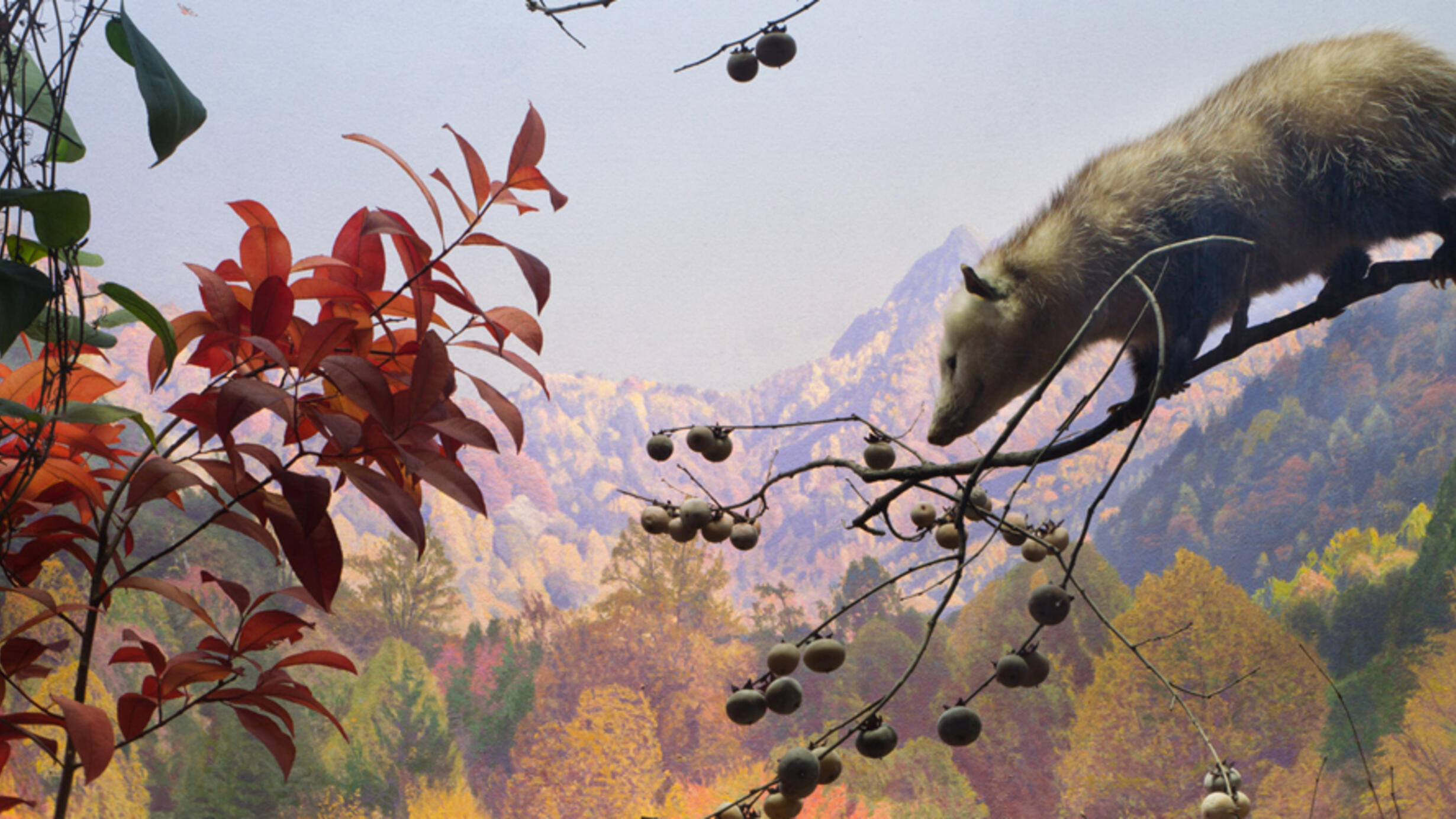Gray Fox and Opossum
Part of Hall of North American Mammals.

October Afternoon, Eastern Tennessee
A gray fox (ground) and a Virginia opossum (tree) are feeding upon ripe persimmons in Great Smoky Mountains National Park. Both animals are omnivores—they eat plants and animals.
Both species are nimble tree climbers as well, yet have different adaptations for the task. Gray foxes shinny up trunks by gripping with their forelimbs while pushing with their hind paws. Opossums climb with the help of an opposable toe on each hind foot, as well as a prehensile or “grasping” tail.
Two Ways to Be a Mammal
Placentals vs. Marsupials
The gray fox and Virginia opossum may look similar, but they represent two fundamentally distinct groups of mammals.
Foxes are placentals, like humans and most mammals today. Mothers have long pregnancies, nourishing their fetuses through a placenta. Newborns are relatively large and robust, sometimes walking within hours.
Opossums are marsupials, a group that also includes kangaroos and koalas. Pregnancies are so short that newborns are barely more than embryos. The tiny babies crawl to a teat using strong forelimbs and nurse for many weeks to complete development. Like many marsupials, Virginia opossums protect their young with a pouch, or marsupium.